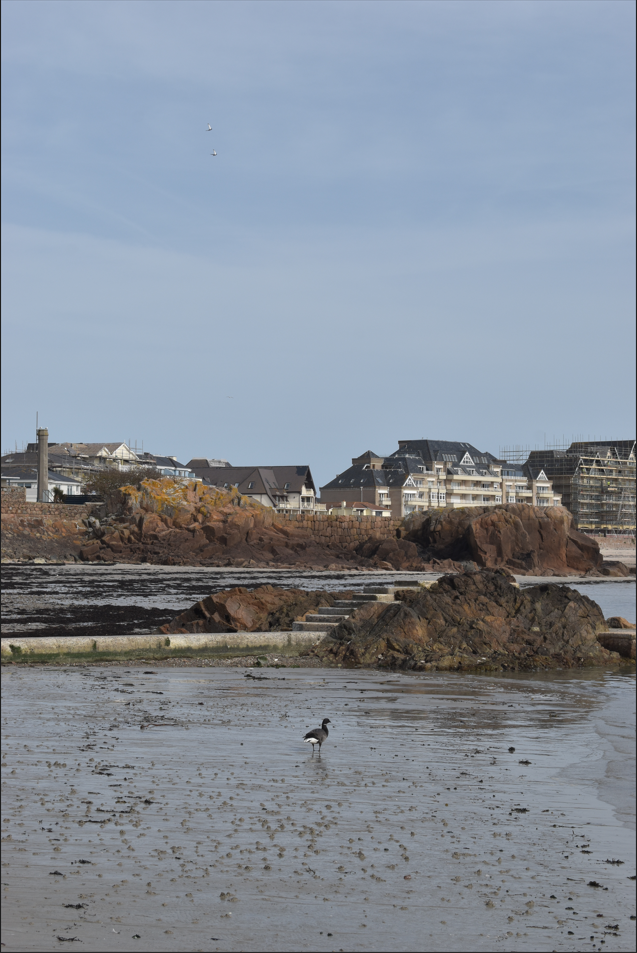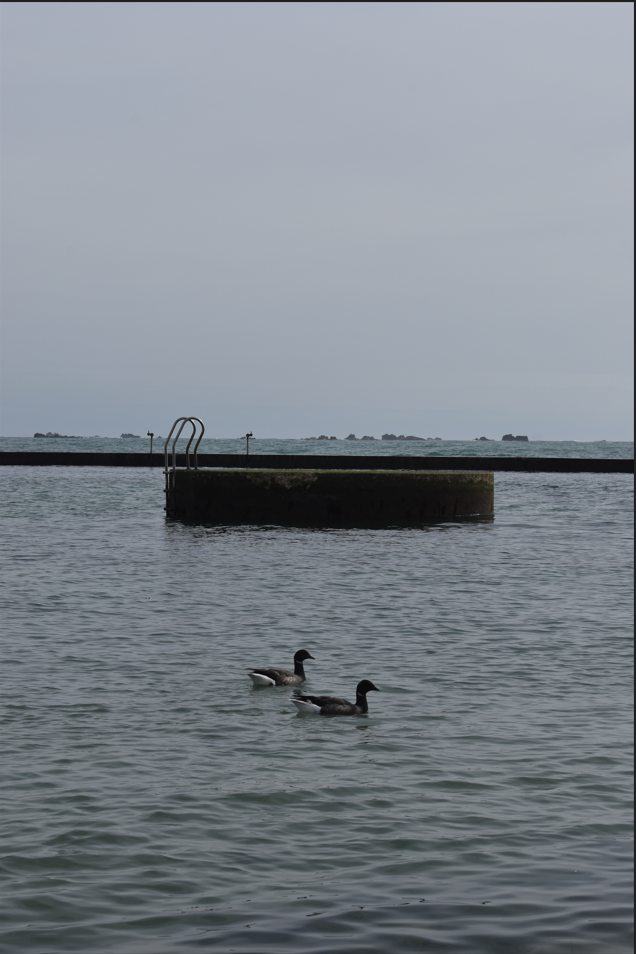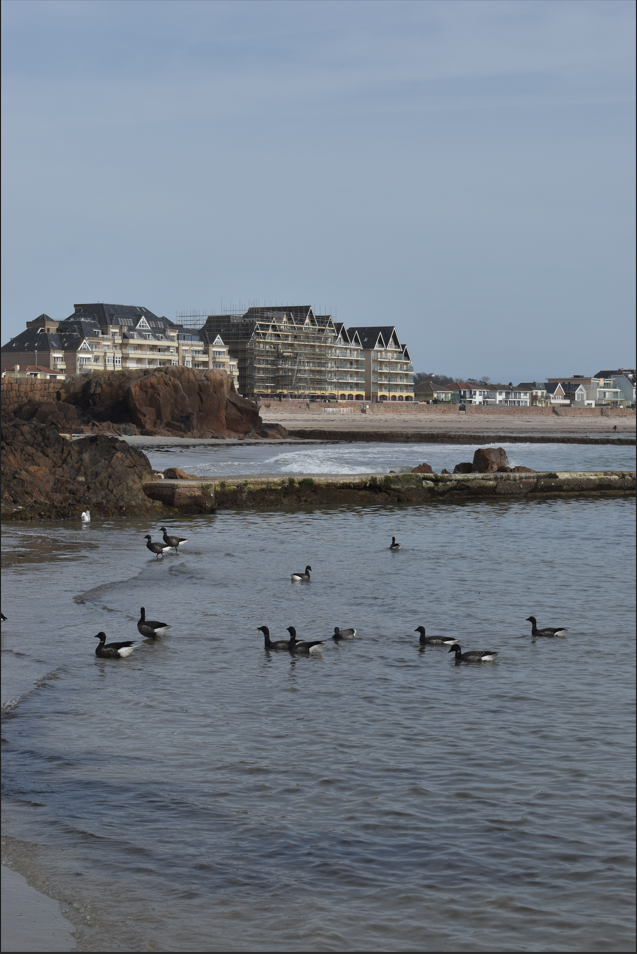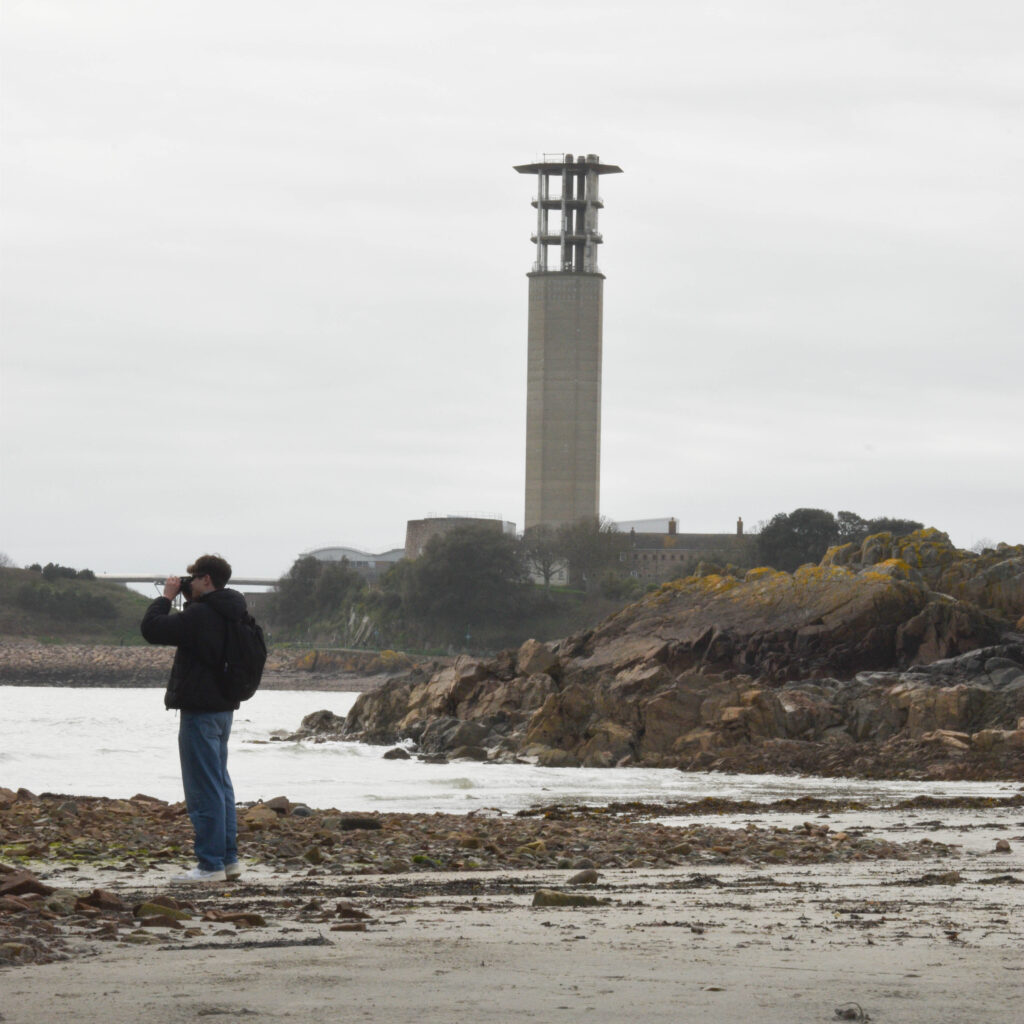

In this photoshoot, I focused on trying to merge the manmade world, such as the seawalls and buildings lined across the seafront, and the natural world, like the beach and the ocean.
I found that including wildlife in the photos also created a good mesh of natural and man made.

Here are the ones I though were best from this selection.



When editing these photos, I could play around with cropping the images into a square format and then presenting them as a triptych.
I also experimented with the rocks along the beach and trying to combine them with the built environment around Harve des Pas, such as the industrial buildings at La Collette.

In these photos, I tried to blend the buildings and the rocks by finding dips in the rocks where I could see the buildings in the background. Additionally, I tried to use the sea as kind of a middle ground to separate the natural rocks from the manmade buildings. Here are the ones I thought were best.



Here are some other photos I took also using these buildings in the background that I thought worked well as new topographic photos.




When editing these photos, I could play around with the cropping to make the buildings more contained in the frame and more of the focus in the shot. Additionally, I could make these black and white to emphasise the lack of emotion that is common in new topographic photos.
Editing
While editing these photos, I want to focus mainly on how these photos are going to be presented together. This means that the photos will have to be cropped the same way, the colouring will have to be the same, and I need to find a way to portray these buildings in a negative way. I could do this by displaying the photos together as different sections of the landscape, going from the beauty of the beach and the rocks to the drabness of the industrial buildings. I could also alter the colouring to go from happy and vibrant to sad and colourless.
To start with, I looked at the photos I took of the ducks. I also found that these photos had a blue sky, whereas the photos of the buildings were cloudy and drab. This meant that I could use this to help me with my idea of changing the colour between the photos.
Here is the first draft of the triptych I wanted to create with the photos of the ducks and the distant background of the coast.

With this draft, I was happy with how the photos turned out, but I felt that the two photos on either side were too similar, so I decided to change the one on the left to another photo.

I was much happier with this second draft, as it also followed my idea of gradually panning towards the industrial buildings, however I felt that the colouring of each photo wasn’t similar enough to create the same effect.

With this draft, I altered the colouring by taking the vibrance and saturation out more and more between each photo and making the photo colder. I also adjusted the exposure and the shadows to amplify this effect. I was very happy with this draft, and I felt that changing the colouring created the slow decline that I was aiming for.
I also tried this with black and white.

I felt that this worked very well, even more so than the previous draft. I was happy with this, so I then moved onto trying something with the industrial buildings. I was thinking of trying to add these photos with the triptych above.

This is what I came up with. My idea was that the top line of photos would gradually decrease in colour, and the bottom photos were completely black and white. However, I felt that these photos were too repetitive in triptych format, so I decided to separate these photos from the triptych of the ducks and rather make these their own presentation.

I thought that this combination turned out fairly well, and both of these photos clearly demonstrate new topographical work.

I also wanted to try and use these photos to tell a story of how mankind has ignored these new ugly developments. I had a few ideas in mind. Firstly, I could present the images like this from left to right. Secondly, I could present the images from top down in square format.





However, I wasn’t sure how I could present the photos in this format. Thirdly, I could crop out the subject in each photo and place them in one photo, and gradually increasing the opacity between each of them.

I thought that this idea worked fairly well and told the story that I had in mind. The subject walks past the tower, completely ignoring it, rather he focuses on something outside of the frame with his camera, demonstrating the aspect of ignorance that is presented in new topographics photos from artists like Frank Gohlke.
Final Images



